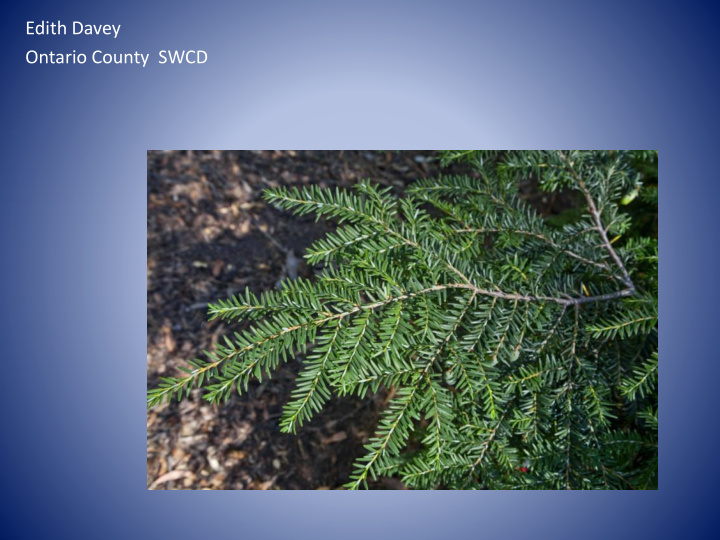



Edith Davey Ontario County SWCD
Under the Hemlock Trees
Surface roots hold soils
Slumping
Flooding
Streambank Erosion
Streambank Stabilization
• Aquatic Habitat Excess sediment can change a stream from one with a clean gravel bed to one with a muddy bottom. With this change many native fish and animals will disappear. • Gravel beds and cobble bars within a stream provide important spawning areas for many aquatic stream species, including trout and other game fish.
• The soil particles cover spawning areas, smothering trout eggs, aquatic insects, and oxygen producing plants. Increased turbidity levels (suspended sediment) in a stream will increase water temperatures, reduce light penetration and plant growth, and affect the ability of fish to locate and capture prey by greatly reducing visibility. • . Trout and other fish can die from the abrasive, gill clogging effects of suspended sediment, which interferes with their breathing
• Loss of stream cooling may change the species able to survive – only warm water fish may be able to live there – exchange trout for crappie.
. • The streams and areas surrounding them are home to a large number of fish, including trout, along with insects, salamanders and hundreds of invertebrates. The hemlocks themselves are home to a few different species of migratory birds.
Nutrients transported by sediment can activate blue-green algae that release toxins and can make swimmers sick..
Recommend
More recommend